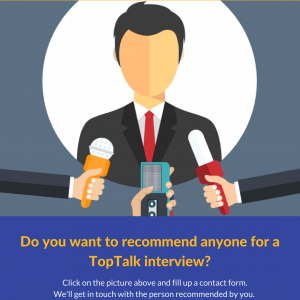 Carol Sanford is a consistently recognized thought leader working side by side with Fortune 500 and new economy executives in designing and leading systemic business change and design.
Carol Sanford is a consistently recognized thought leader working side by side with Fortune 500 and new economy executives in designing and leading systemic business change and design.
Carol is the author of The Responsible Entrepreneur; Four Game-Changing Archetypes for Founders, Leaders, and Impact Investors, The Responsible Business: Reimagining Sustainability and Success, and most recently, The Regenera ve Business: Redesign Work, Cultivate Human Potential, Achieve Extraordinary Outcomes. Her books are required reading at leading business schools including Harvard, Stanford, Haas Berkeley and MIT. Carol also partners with producing Execu ve Educa on through Babson College, Kaospilot in Denmark and the University of Washington, Bothell, The Lewis Ins tute at Babson.
Among her many recognitions, Carol is named as Executive in Residence and Senior Fellow in Social Innovation at Babson College, was honored with Thought Leader Life me Achievement Award from Trust Across America-Trust Around the World and received the Athena Award for Excellence in Business, Mentorship, and Community Service. Carol is often called a visionary who offers revolutionary new ideas. But most importantly, Carol offers a pathway to extraordinary results for businesses and their stakeholders.
What does organizational culture mean to you?
Culture is similar to the personality of a human. It is learned and created but not innate or permanent. It can be evolved. It is created and then evolved significantly by the rituals that an organization engages in every day. For example, if they have done everything top down, you create the experience of an authoritarian culture, even if benevolent. To change the culture, the personality, you would shift to doing many, and eventually most, events in what I call a self-to-self way, not cascading. It is also framed by what people give status to and make taboo. This idea is an anthropological look at culture.
What are the major determinants of organizational culture?
Culture needs to match Corporate Strategic Direction and the Philosophy of the business. Most are rubber stamps of the larger business world, driven a lot by human resource programs which are generic and often toxic. The culture also needs to work in support of the Essence of the business which gets hidden by most cultures. E.g. Seventh Generation, the non-toxic household products is, at its essence, about social justice and authenticity, but that was lost in the culture of sustainability. It was working from generic programs of what was right and maintaining them. The culture was antithetical to the Essence of the business. When we designed a way to bring authenticity and social justice into the everyday business from product development to customer service to working with workers, it evolved and created alignment between Strategic Direction, Founding Essence, and culture. It caused revenue to grow 45-65% over the next four years.
What is the role of employees in organizational culture?
Culture is everyone’s role because they are all creating it. It is not a separate thing from how people operate or something a manager does in which employees participate. My experience is it needs to be an organization-wide endeavor with no hierarchical roles evident except for fiduciary decisions. You start with redesigning strategy, then culture follows as you do strategy. I write about this in a lot of detail in The Regenerative Business: Redesign Work. Cultivate Human Potential. Achieve Extraordinary Outcomes. Winner of the Nautilus Gold, Best Business Book of the year, released at the end of last year.
What are the common problems associated with managing organizational culture?
In order to manage culture, you don’t focus on it. It is an outcome of how the business is run, the choices that are made. It is not a thing you manage separately. When I work with a company, I am in an education and development process with a company, not consulting, and I do it with a mix of levels and roles and show no preference to hierarchy. They are not learning in advance of others but struggle with everyone. We do that over several years and in all projects and tasks and breakouts are never lead to executives. I have many other culture destabilizing processes that stir up people from what they normally give status to and the rituals they engage in by rote. Most are sports because of male leaders. I use living systems, which is not about nature but about how life works. When people see themselves embedded in the living system and see themselves affecting it, one another and therefore democracy, it is a cultural shift. You have to work on dropping the machine metaphors, the behavior metaphors and human-centered one, to overcome many of the problems of culture. The language holds the culture in place as it is.
What are the ways to innovate company culture? Any best practices to share.
There are no best practices in anything. This is a myth made up by some consultant to make money. It is a very very toxic myth. That is the worst concept ever created because it undermines all businesses and all cultures being unique and relevant to their market and uniqueness. It means, “copy someone else” based on their claim about what they did. This is the opposite of innovation.
Innovation comes from starting with the customers and market followed by design work so people can respond to that. This means you structure work differently so that people work differently. As I have said three times in this interview, there is no separate thing called culture you work on directly.
Suggestion:
First, you ask yourselves, what is the innovative direction we want to take our business in the market. How do we want to position ourselves in the market to be a unique contribution to our customers and consumers? How do we create a Business model to achieve that? Now you are ready to explore the four questions
about how you need to work to do that. This will also lead to the new culture
A. What do we need to give status to in terms of what is
significant in the way people work? How do we change that from where we give status now.
B. What are the symbols we use, stories we tell, metaphors that frame our way of seeing and working? This takes some work since they are, like all of the cultures, invisible. But examine the pattern of language can help. All cultures have a pattern to the language they use that is indicative of their symbolic representation and what they value.
C. What are the rituals we need to get people to notice new things? Now you probably have forms and events that have nothing to do with the new direction. You open and close all the same way with the same people. What we ritualized
becomes ingrained and their culture. What can we change?
D. What needs to be taboo with the new direction? How do we change what is taboo—stop some and add others? E.g. reconciling conflicts by making both people/groups happy, versus asking what the customer would say.
These four questions are all about the water we swim in called culture. They are never examined and working on culture without this examination is a fragmented process that will not change the culture. It just confuses people and often annoys them. Toxic Practices are made up of so-called “best practices”. Most are create the culture and would best be made taboo.
Join the Book Club: Get a 150-page workbook. Listen to 6 Q & A sessions with me the author. My new book has 15 case stories on how to evolve an organization, regenerate it, and how each business in the story did it. If you want to buy it in bulk through my publisher, you can participate in the Book Club, locally with the workbook, and with the recorded 6 calls based on the most frequently asked questions of readers. carol@carolsanford.com for more info
